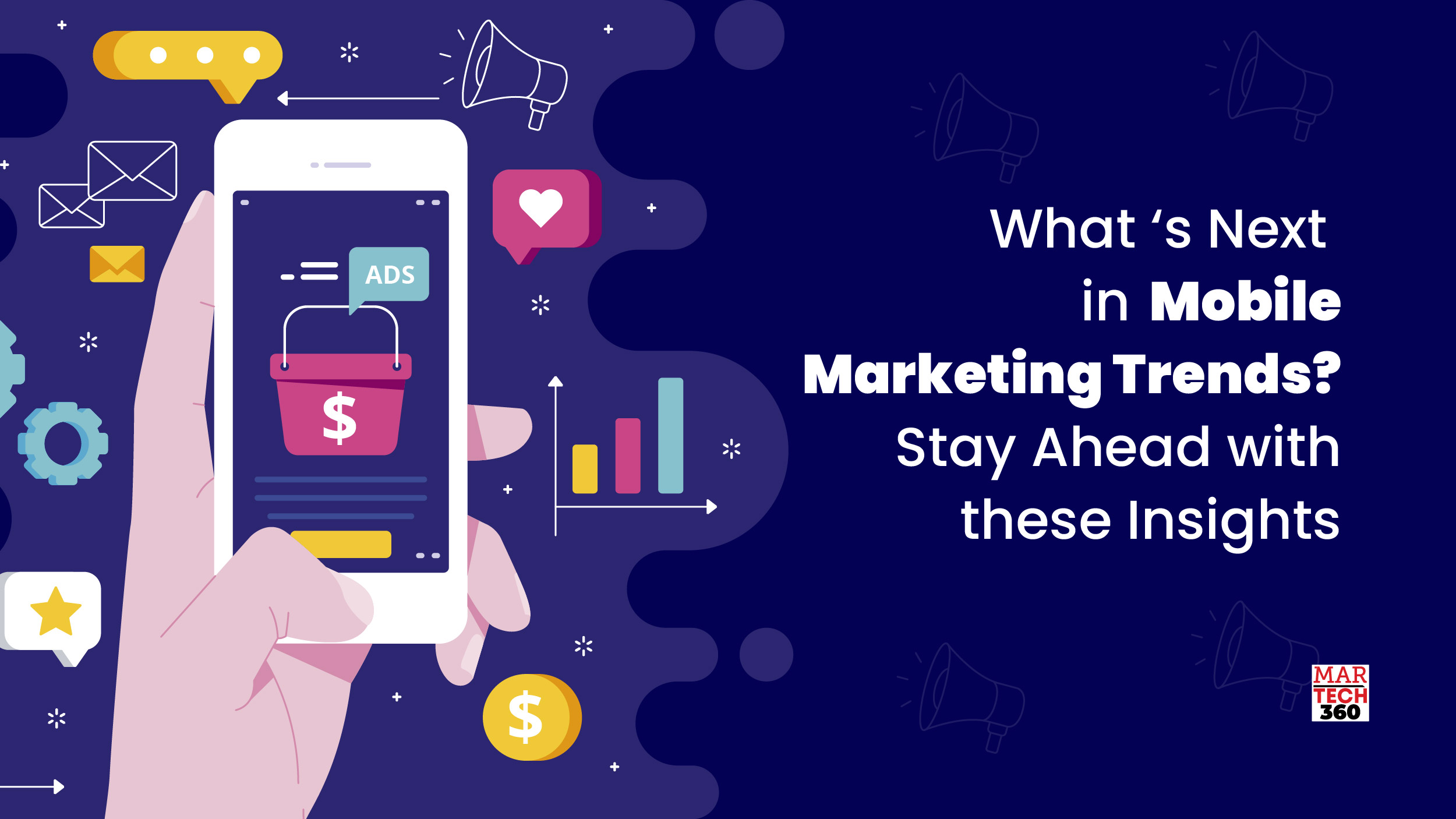We frequently use words like dynamic, quick-moving, unpredictable, etc. to describe the mobile sector. In light of the recent pandemic, these adverbs are particularly appropriate. The pandemic’s effects on mobile marketing have been profound, and they will continue to be experienced. We no longer simply discuss human technological improvements when discussing mobile marketing trends. Additionally, we must take into account how the mobile environment has been shaped by the new circumstances (the new normal).
The pandemic’s effects were the strong boost the mobile sector needed to expand more quickly in the years to come. As a result of this, marketers must take care to target customers effectively and reach them in the correct places with appropriate mobile marketing strategies.
We’ve compiled a list of mobile marketing trends for 2023 for you to keep an eye on to assist you with that. But before that let’s take a look at what mobile marketing exactly is and then move towards mobile marketing trends along with mobile marketing future.
What is Mobile Marketing?
Reaching and interacting with your customers through their mobile devices is known as mobile marketing. Understanding the most recent mobile marketing trends is essential when developing an efficient mobile marketing plan in order to connect with your target market where they are most engaged.
What Are the Top Mobile Marketing Trends to Look Out for in 2023 and Beyond?
The important mobile marketing trends for 2023 that have led to market disruptions are outlined in this article. Marketers can find data-driven trends that can assist them in developing their mobile marketing strategies, like m-commerce, shoppable social media postings, and mobile gaming. Thus, they can still have successful mobile marketing strategies despite the difficulties posed by rising ad costs and the digital divide. Let’s dig in.
1. Mobile Commerce: Key Dominator of Mobile Marketing Trends Game
You’ve probably made a mobile commerce transaction if you use a smartphone. Using mobile devices to buy and sell products and services is a current trend.
Mobile commerce is frequently carried out through online marketplaces such as Amazon, eBay, and Shopify, but it can also be done through social media. Social commerce is a branch of mobile commerce that describes this trend.
Although mobile commerce has been around for a while, the craze really took off in the early COVID-19 pandemic months when the majority of physical stores had to close.
 Will mobile commerce continue to grow in popularity now that the world economy has resumed? I believe the trend will continue given how popular mobile purchasing has become.
Will mobile commerce continue to grow in popularity now that the world economy has resumed? I believe the trend will continue given how popular mobile purchasing has become.
2. Mobile Streaming Video Content
The way individuals consume content has seen a significant change in recent years. On mobile devices, watching videos is much more common than reading texts.
In 2022, 82% of internet traffic would be made up of downloads and streaming of online video, according to a Cisco study.
There are many causes for this trend, but the following are a few that stick out:
- The rich, immersive experience that mobile videos offer in the first place draws consumers in.
- Second, sharing videos on mobile devices is simple.
- Third, mobile technology and internet speed have substantially advanced in recent years.
- Then there is TikTok.
Yes, TikTok!
TikTok is unquestionably the winner when it comes to mobile marketing trends. The app for short-form video content is currently the most downloaded app in the world with more than 3 billion downloads.
TikTok is on track to become one of the most effective mobile marketing trends in the world due to its algorithm, which offers a never-ending stream of content.
Even more so, similar short-form video content techniques have been implemented by other platforms like YouTube and Instagram.
3. Augmented Reality: A Must-Have Mobile Marketing Trend?
One of the newest and most fascinating mobile marketing trends is augmented reality (AR).
Users are now able to interact with digital content in a physical setting due to technology.
While augmented reality is still in its infancy, some brands have already used it to create engaging experiences in impressive ways. Ikea is one of them.
The world’s largest retailer of furniture has created an app that lets people visualize furniture in their homes before purchasing it.
Sephora is another business that has employed augmented reality in its advertising. Customers may experiment with makeup before buying it due to the AR mirror app from the personal care and beauty product brand.
4. User-Generated Content
User-Generated Content (UGC) is any content produced by regular mobile users as opposed to establishments, experts in marketing, or influential people. Everything from reviews and blog articles to images and videos is included.
It’s getting increasingly challenging for businesses to break through the clutter and really connect with customers in a world where people are inundated with promotional messages every day. UGC enables marketers to establish a personal connection with their audience.
UGC is created by average people, in contrast to traditional marketing techniques, and the majority of mobile users believe them to be more relatable, genuine, and reliable. This is one of the factors that attract businesses to TikTok.
Since anyone can create content on TikTok, it serves as a useful platform for gathering user-generated content and connecting with potential customers.
5. Personalization: The Key to Successful Mobile Marketing Strategy
Businesses would just send out bulk SMS or launch a simple mobile website in the early days of mobile marketing, and then call it a day.
Consumers today, however, are more knowledgeable and demanding than ever before, wanting personalized experiences catered to their unique demands as mobile usage continues to rise.
Given that more digital natives are anticipated in the worldwide consumer population over the next few years, this expectation is likely to stay high.
I’m referring to Generation Z (Gen Z), or individuals who have spent their entire childhood having continual access to the internet and mobile technology.
By the end of 2022, Gen Z customers made more than 41 million digital purchases in the United States, up from 40% of global consumers in 2020.
How can you provide a personalized digital marketing experience?
Here are some recommendations we’ve found to be very effective at providing a personalized digital marketing experience:
- Drawing up a client profile and a buyer’s journey.
- Giving advice on what to buy based on previous choices.
- Showing customized in-app advertisements and push alerts based on mobile user behavior.
- Using chatbots and other AI-powered technologies to deliver more specialized content.

6. Mobile Games as Social Networks
Since the beginning of the use of mobile devices, mobile gaming has advanced significantly. Today, billions of people worldwide play mobile games, which are also becoming more social.
The widespread use of 5G networks and cloud data is one of the trend’s main drivers. These two technological developments have improved the immersiveness of mobile gameplay, as well as the synchronization and interaction of several players in various locations.
In-game advertising might account for more than 60% of the global market in 2022, according to studies on the mobile gaming sector. Additionally, it is expected that the sector will generate more than $136 billion in revenue in the same year. It should come as no surprise that companies are seeking methods to profit from this sector’s rapid growth.
I won’t be shocked if more marketers and businesses in the future focus on the possibilities of the mobile gaming sector, given how smart and captivating mobile games are growing year after year.
What’s in Store for the Future of Mobile Marketing Trends?
The reality that marketing is becoming more mobile must be acknowledged. It’s critical now more than ever for your brand to have successful mobile marketing strategies as we draw nearer to a time when mobile devices will be widely used.
As you develop your campaigns, keep the aforementioned mobile marketing trends in mind to improve user engagement, increase conversion rates, and gain a competitive advantage in general.
The moment is now, though, if you haven’t yet established a mobile presence.


Comments are closed.